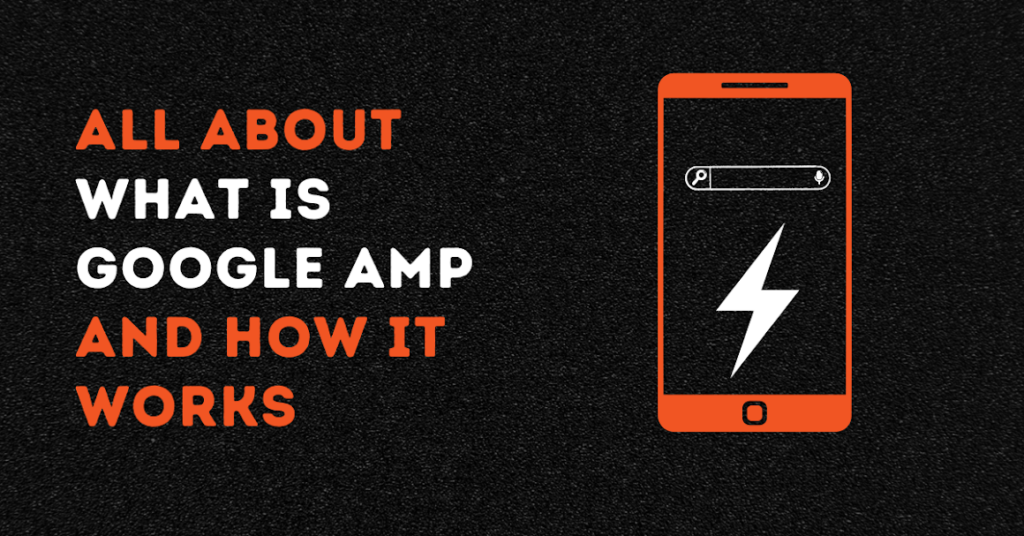Accelerated Mobile Pages, or AMP, is an initiative to improve website loading speed on mobile devices. If you want to know what is Google AMP and how it can be helpful in SEO, you can find all the details here.
The number of mobile phone internet users has increased rapidly in the last two decades. According to various statistics, mobile web traffic has grown by over 500% since 2011. Therefore, it has become essential to optimise websites for the better mobile experience.
A fast loading on mobile improves user experience and helps in SEO, as Google detects mobile-friendly pages and ranks them higher on SERPs.
What is Google AMP?
Accelerate Mobile Pages, known as an open source HTML framework, helps website pages in fast loading and optimise for mobile devices. It is like a stripped-down version of any standard website.
Google has launched AMP as an open source, designed for websites to help in better user experience for mobile content consumption.
The framework helps SEO as users prefer websites to open within 3 seconds. If the site takes time, 90% of people will switch back. It increases the bounce rate and eventually causes a negative impact on the SEO.
How does Google AMP work?
Here are three ways in which AMP works. Let’s have a look!
AMP HTML:
The AMP is an HTML framework, and it works smoothly (with few restrictions) to ensure page fast loading speed. AMP HTML changes and sometimes removes a few elements and features that cause the slow speed of webpages.
AMP HTML must have a few features to provide the best user experience, such as;
- It should start with <!doctype html>. It is important to transfer information to the browser so it can know what type of document it is.
- Too indicate it is an AMP HTML page it should include a top level <html amp> or <html ⚡> tag
- To define content such as heading, title, paragraphs, links, images, etc., it should include <head> and <body> tags
- To show that the page is regular HTML page it should include a <link rel=”canonical” href=”URL”>
- To indicate any encoding the AMP should include tag <Meta charset=”utf-8″>
- To show AMP boilerplate cote use the head tag (head > style [amp-boilerplate] for noscript > style[amp-boilerplate])
- To direct the browser on page dimension control instructions it should have a tag <meta name=”viewport” content=”width=device-width”>
- Lastly, to indicate extensions base library it should include the tag <script async src=”https://cdn.ampproject.org/v0.js”><script>AMP Java Script:
AMP Java Script also works effectively for the website on mobile; however, using it can be challenging as too much JS can lead to unresponsive and slow web pages.
However, it is good practice for mobile as AMP’s JavaScript library consists of a framework and elements that help build pages that load quickly without importing third-party libraries or writing JS. Every feature of AMP Java Script is an important part to boost visitors’ experience.
AMP Cache:
The AMP cache is a game-changing framework to optimise site speed as it allows loading the site’s multiple parts from various servers simultaneously. Moreover, it allows the visitors to load the web pages from the closest servers to them. Therefore, the website loads very quickly, and more people can visit it.
It is all made possible by AMP Cache as it is a proxy-based content delivery network – commonly known as CDN. The exclusive feature of the framework is that it pre-renders and pre-fetches the AMP pages before they are requested by the visitors.
Benefits of Google AMP:
Up till now, it is understood clearly by what is Google AMP is that it is a framework that helps load websites fast for a better user experience to reading and understand web content on mobile devices.
However, there are many other benefits of AMP for businesses from the perspective of SEO strategies, for instance;
Boost website engagement:
AM content is lightweight, and it blends well with mobile devices that do not have a stable or smooth internet connection. More importantly, it decreases the page loading time, which helps create a better user experience and increases the chances that the reader will stay on the website longer. Therefore, it all leads to increased website engagement.
Better Traffic improved Ranking:
One significant Google ranking factor is page loading time, and AMPs are helpful in boosting page loading speed. Therefore, AMPs are preferred in Google search algorithms, and eventually, they have an effect on rankings.
It is like two websites of the same niche going neck-and-neck in competition. The winning factor will be page loading speed. So, AMP is helpful in improvised ranking and better traffic.
Minimise Bounce Rate:
According to Google and various research, it is observed that over 90% of people leave the website if it does not download in minimum time (i.e., 3 seconds), eventually increasing the bounce rate. With the help of AMP, the page loads quickly on mobile devices.
Moreover, the web publisher who uses AMP can get double the time that is spent on web pages. The more people stay on the webpage, the more conversions are possible.
Increase Views of ads:
As AMP is an HTML framework, it is coded to boost the view-ability and usability of images and banners. Therefore, the visitors are more likely to view the ads on the page. With the help of increased ads view-ability, there are more chances of getting your page monetised quickly.
Higher CTR – Higher Click-through Rates:
One significant benefit of implying AMP is that it is displayed in the top lists of stories or carousels in the search engine mobile SERPs. It means the website with AMP is shown on top of all search results on the Google page. Therefore, the readers are more likely to click on these pages, leading to increased click-through rates – CTR.
Drawbacks of Google AMP:
AMP is no doubt essential for websites. However, there are a few limitations or drawbacks to implementing AMPs for mobile devices. Such as;
- AMP only allows one advertisement tag per page
- Google initially displays the AMP icon to show it is AMP content. However, the practice is no longer in use now.
- AMP has restricted and limited design elements that might have a negative impact on the website’s appeal.
Conclusion:
With a better understanding of What is Google AMP, its benefits, and its limitations, the web publisher can create a better page for the user. With AMP the webpage content gets more chances of ranking high on search engine pages as it boosts user experience and lets them stay more on the website. With better user-experience and staying longer on the website increases chances of traffic conversion and monetisation of the webpage.



